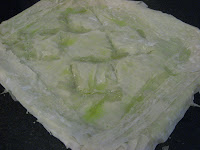 I guess it's testament to his brilliant story-telling that the novels of Thomas Hardy are still incredibly popular more than a hundred years after he wrote them. His more famous novels, like Tess of the d'Urbervilles, Jude the Obscure and Far from the Madding Crowd, have been interpreted dozens of times on stage and in film. In the latter period of his life, Hardy stopped writing novels altogether and concentrated on poetry, which he believed to be his true vocation.
I guess it's testament to his brilliant story-telling that the novels of Thomas Hardy are still incredibly popular more than a hundred years after he wrote them. His more famous novels, like Tess of the d'Urbervilles, Jude the Obscure and Far from the Madding Crowd, have been interpreted dozens of times on stage and in film. In the latter period of his life, Hardy stopped writing novels altogether and concentrated on poetry, which he believed to be his true vocation. The tradition of lending libraries
I was a huge fan of Hardy when I was a teenager - devouring his novels, which I borrowed from my local public library, just as Hardy's readers borrowed from private lending libraries! It's funny how I feel the need to explain that now, as if the idea of public libraries in the late 20th century is as obscure as the idea of private lending libraries in the late 19th century. I guess, one of the great advances of the digital age is that books by writers such as Hardy are easily accessible and downloadable for free.
Whether it's in paper format or digitally, I still get a lot of pleasure from reading Hardy - his prose is poetry and it's easy to lose yourself in his descriptions of life in 19th century Dorset (or Wessex to us Hardy fans!), far away from the complications of 21st century life!
On Chesil Beach
 |
| View of Chesil Beach by me |
There is a famous scene in Tess on their wedding night, when they both confess all of their secrets to each other and it's as though McEwan has taken this scene and turned it into a novella. Despite having very different lives than the characters of Hardy's time, McEwan's characters are equally bound by the oppressive mores of early 1960's England. If you haven't already read it, please do, it's a beautiful and tragic story.
Naive Spice
In the words of The Spice Girls; If you want my future, forget my past. Tess could certainly have done with a bit of 'girl power'. But, if she'd been a Spice girl, I'm afraid she would have been Naive Spice. It's the great tragedy of Hardy's novel that Tess's new husband, Angel Clare, allowed her past to get in the way of their future together.
Hardy was brilliant at developing female characters and quite a lot of the novel deals with Tess's bitterness when she realises that different rules apply to men and women. Men can have a past but women, when it boils down to it, really can't.
Stag or Slut?
Although the moral context of Hardy's novel was quite different to the moral context of life in England today, the way that women behave in the 21st century is still perceived differently than the way men behave. If a man sleeps around, he's a 'stud' - but if a woman sleeps around then she's branded a 'slut'.
Perhaps, in his own way, Hardy was trying to further the cause of women, like Tess, who found themselves in trouble at an early age, often through no fault of their own, or because of their good looks. I wonder what Hardy would have made of the Slut Walks of the modern age?
Florence and Edward
 |
| Chesil beach in the evening by me |
Like Tess, Edward eventually follows his partner and they confront each other during a really beautiful sequence set on Chesil Beach. Also like Tess, Edward is essentially innocent and it's Florence's hang-ups that prevent them from having a future together. But like Tess, it's hinted that Florence has been abused at some time in the past, which explains why she is frigid. Both of McEwan's characters have elements of Tess, which is what makes the situation even more beautiful and tragic.
Tess on Chowpatty Beach
As part of my research I watched Michael Winterbottom's adaptation of Tess which is set in modern-day India and renamed Trishna. I really enjoyed this movie and the sense of tragedy that might be missing from a woman's position in 21st century Dorset, is still very tangible in 21st-century Rajasthan. Part of the movie is set in Bombay and was filmed on Chowpatty beach, a nice contrast with Chesil Beach in Dorset (I've been on both!)
Winterbottom combines the two main male characters into one, Jay Singh. The change in Jay's attitude towards Trishna, when he finds out the truth about her, makes it seem as though he's become a different person. Trishna's story is interesting in its own right and I'd definitely recommend the movie. I'm posting a trailer to entice you . . . oh, and it has a wicked soundtrack - enjoy!
Image credits:
Both photos of Chesil Beach were taken by me, please feel free to reuse under the Creative Commons license:
- Attribution (especially to this blog post)
- Share Alike
- Non-commercial




















